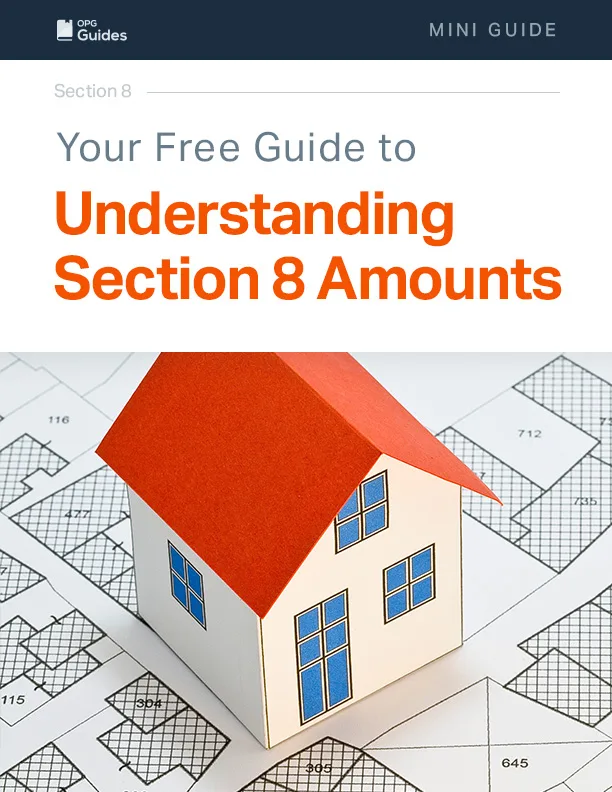Your Free Guide to Getting Help Paying Bills
Your Free Guide to Getting Help Paying Bills
We are privately owned and not affiliated with the government in any way or form.

Introduction
In an era of increasing living costs, paying bills can be challenging for many people. Fortunately, various programs and strategies are available to provide assistance, and this guide is here to guide you through them.
The Basics of Bill Assistance
Assistance with bills is available in multiple forms, including government-sponsored programs, non-profit organizations, and even through negotiating with your utility providers. All these efforts aim to reduce the financial burden and make daily living more affordable.
With the wide range of socio-economic backgrounds and individual circumstances, there’s not a one-size-fits-all solution. As a result, bill assistance is available in several forms to cater to diverse needs. Below, we will delve further into bill assistance, exploring its various forms and significant impacts on individuals and families.
Government-Sponsored Programs
Government-sponsored programs form a crucial aspect of bill assistance. These programs are generally designed for low-income families, the elderly, and people with disabilities who cannot afford basic utility and living costs.
Programs like the Low-Income Home Energy Assistance Program (LIHEAP), Lifeline (for telecommunications services), and state-specific utility assistance initiatives are examples of how the government can try to ensure that essential utility needs are met. These programs may provide direct financial assistance, subsidies to offset utility costs, or aid in managing payments.
Non-Profit Organizations
Non-profit organizations often step in to fill the gaps left by government programs. These can include local charities, national organizations, and religious institutions. They may provide emergency bill assistance to prevent service disruption, help with utilities, or assist with medical bills.
For example, the United Way, Catholic Charities, and The Salvation Army have programs to assist individuals and families with their utility and living expenses. These organizations often use a combination of community donations and government grants to fund their assistance programs.
Benefits of Bill Assistance
There are many benefits of bill assistance. Firstly, it can ease the financial stress of individuals and families, allowing them to allocate their money to other critical areas like food, healthcare, and housing. It also reduces the risk of service interruptions and promotes stability in living conditions.
Beyond the financial impact, bill assistance can profoundly affect mental health. The stress of being unable to meet basic needs like utilities can lead to anxiety, depression, and other mental health challenges. By providing a safety net, bill assistance programs help foster a sense of security and well-being.
The Low-Income Home Energy Assistance Program (LIHEAP)
One of the most well-known forms of bill assistance in the United States is the Low-Income Home Energy Assistance Program (LIHEAP). This federal program provides aid to eligible low-income households to manage their energy costs.
Funds are provided on a first-come, first-served basis. This means that even if you qualify for the program, you may not receive any benefits if your state has already distributed its allotment for the year.
However, the Biden-Harris Administration recently announced an additional $3.7 billion in funding for LIHEAP. This means that states can expect to receive more federal money to support the program, which can mean providing assistance to more eligible families throughout the remainder of 2023 and into 2024.
Eligibility
Eligibility for LIHEAP is primarily based on household income and size. It is available to eligible U.S. citizens and specified categories of non-citizens with qualifying immigration status.
In 2023, the federal government rolled out a handy eligibility tool on the LIHEAP website. The tool allows individuals and families to quickly check if they might qualify for LIHEAP. You can access the eligibility tool here: https://liheapch.acf.hhs.gov/eligibility-tool
To use the tool, you’ll need to enter the following information:
- State or territory of residence
- American Indian or Alaskan Native (AIAN) tribal status
- Household size
- Household monthly income
- You can also choose to enter your weekly or yearly income if that is easier to calculate.
- Whether anyone in your household receives other government benefits
- Programs include Supplemental Nutrition Assistance Program (SNAP), Supplemental Security Income (SSI), Temporary Assistance for Needy Families (TANF) or benefits from the Department of Veteran Affairs (VA)
The tool will not provide an official or final answer regarding your eligibility, but rather that you may or may not be able to qualify. If the tool notifies you that you might be eligible, you can follow the on-screen prompts to apply for LIHEAP.
For more information about eligibility or LIHEAP in general, you can call toll-free 1-866-674-6327 between 7 a.m. and 7 p.m. EST.
Application Process
Applications are usually made through a local LIHEAP office. Officials will verify individuals’ eligibility and provide aid if they qualify. Unfortunately, demand often exceeds supply, and there can be waiting periods.
To search for a LIHEAP office near you, you can use the LIHEAP Office Search Tool here: https://liheapch.acf.hhs.gov/search-tool/state-territory/
How It Works
Once approved for LIHEAP, the amount of financial assistance one receives may depend on a range of factors, including household size, total gross household income, and energy needs. The aid is usually a one-time payment sent directly to the energy provider to offset the cost of utilities.
Tips for Making Your Home More Energy Efficient
Improving your home’s energy efficiency can be a great way to reduce energy bills and make the most of LIHEAP benefits. By taking a few steps to conserve energy, you may be able to lower your utility costs and create a more comfortable living environment year-round. Here are some practical tips to help you get started:
Seal Leaks and Insulate Properly
One of the most effective ways to make your home more energy-efficient is by sealing leaks and improving insulation. Check for drafts around windows, doors, and any openings where pipes or cables enter your home. You can use weather stripping or caulk to seal these gaps.
Additionally, ensure your home is well-insulated, especially in the attic, walls, and floors. Proper insulation keeps the warm air in during the winter and the cool air in during the summer, reducing the need for constant heating or cooling.
Upgrade to Energy-Efficient Appliances
If you have old, inefficient appliances, they could be contributing significantly to your energy costs. Consider upgrading to energy-efficient models that carry the ENERGY STAR® label. These appliances typically use less electricity and water, helping you save money in the long run. Common appliances to consider upgrading include refrigerators, washing machines, dishwashers, and air conditioning units.
Use a Programmable Thermostat
A programmable thermostat can be a game-changer for energy efficiency. It allows you to set your heating and cooling systems to run less frequently when you’re not home or while you sleep. By adjusting the temperature by just a few degrees, you can often save a good amount on your energy bills. Some modern thermostats can even learn your schedule and adjust automatically, optimizing energy usage without sacrificing comfort.
Switch to LED Lighting
Lighting accounts for a significant portion of any home’s energy use. Replacing traditional incandescent bulbs with LED bulbs can serve as a simple and cost-effective way to reduce energy consumption. On average, LEDs use up to 75% less energy and last up to 25 times longer than incandescent bulbs, meaning you can expect to spend less on replacements and energy over time.
Maintain Your Heating and Cooling Systems
Regular maintenance of your heating, ventilation, and air conditioning (HVAC) systems can keep them running efficiently. Change filters regularly, have your system inspected annually by a professional, and keep vents and ducts clean. An efficient HVAC system typically uses less energy to keep your home comfortable, which can lead to significant savings on your utility bills.
Reduce Water Heating Costs
Water heating is another major energy expense. Lowering the thermostat on your water heater to 120°F can potentially reduce your energy consumption without sacrificing comfort. Additionally, consider insulating your water heater and the first few feet of hot water pipes to minimize heat loss. Installing low-flow showerheads and faucets can also help reduce the amount of hot water you use, leading to further energy savings.
Use Energy Wisely
Finally, adopting energy-conscious habits can make a big difference. Turn off lights, appliances, and electronics when they’re not in use. Unplug chargers and devices that aren’t in use, as they can draw power even when not active. Washing clothes in cold water, air-drying laundry, and running full loads in your dishwasher can also help reduce energy consumption.
Other Forms of Bill Assistance
While LIHEAP is a crucial resource, there are other forms of assistance out there.
- State and Local Programs: Many states and cities offer bill assistance programs. These often have different eligibility requirements and benefits, so research what’s available in your area.
- Non-Profit Organizations: Various charities and non-profit organizations may assist with bills and other living expenses. These include religious organizations, community groups, and charities like the Salvation Army or United Way.
- Temporary Assistance for Needy Families (TANF): This federal program provides financial aid to qualifying families in need. While not explicitly a bill assistance program, funds from TANF can be used towards utility and other bills.
Additional Ways to Get Bill Assistance
Aside from the methods mentioned above, there are some other ways to seek bill assistance:
- Payment Plans: Many service providers understand that people can experience financial hardship. As a result, they might offer payment plans that spread the cost of a bill over a longer period, making it more manageable.
- Discounts: Some companies may offer discounts to specific groups, such as veterans, the elderly, or those with low incomes. Feel free to ask your service providers if they offer such discounts.
- Grants: Besides government-sponsored programs, various other grants are available to help with bills. These can come from private organizations, charities, or even from utility providers themselves.
- Medical Bill Assistance: For those facing high medical costs, hospitals often have financial aid policies or charity care programs that can help lower your bills. There are also non-profit organizations that specialize in helping with medical debt.
Tips for Reducing Your Bills
If you feel like your bills are too expensive, here are some strategies that could help lower your costs:
- Negotiation: Speak to your service providers about the possibility of reducing your bills. They may offer a lower tariff or direct you to cost-saving plans they offer.
- Energy Efficiency: Make your home more energy-efficient. This can include steps like insulating your home, using energy-efficient appliances, and being mindful of your energy consumption.
- Water Conservation: You can lower your water bill by fixing leaks promptly, using water-saving appliances, and taking shorter showers.
- Switch Providers: Shop around to see if another provider offers the same service at a lower cost. You may find cheaper rates elsewhere. This can apply to utilities, insurance, internet, and more.
- Government Programs: Look into government programs designed to help lower the cost of utilities, like the Weatherization Assistance Program (WAP), which helps reduce energy costs for low-income households by increasing the energy efficiency of their homes.
Tips for Saving
Saving money often involves taking a close look at where your money is going and making adjustments. Here are some tips:
- Budgeting: Create a detailed budget that tracks your income and expenses. This can help you see where your money is going and identify areas where you could cut back.
- Lowering Food Costs: Plan your meals, use grocery lists to avoid impulse buys, and cook at home more often. Buying in bulk or choosing store brands can also save money.
- Cancel Unused Subscriptions: If you’re paying for subscriptions or services that you don’t use (or don’t use often), consider canceling them.
- Automate Savings: Consider setting up an automatic transfer to your savings account each month. It’s easier to save money when it’s done automatically.
Remember, every little bit helps when it comes to saving money and lowering your bills. Small changes can add up to big savings over time.






